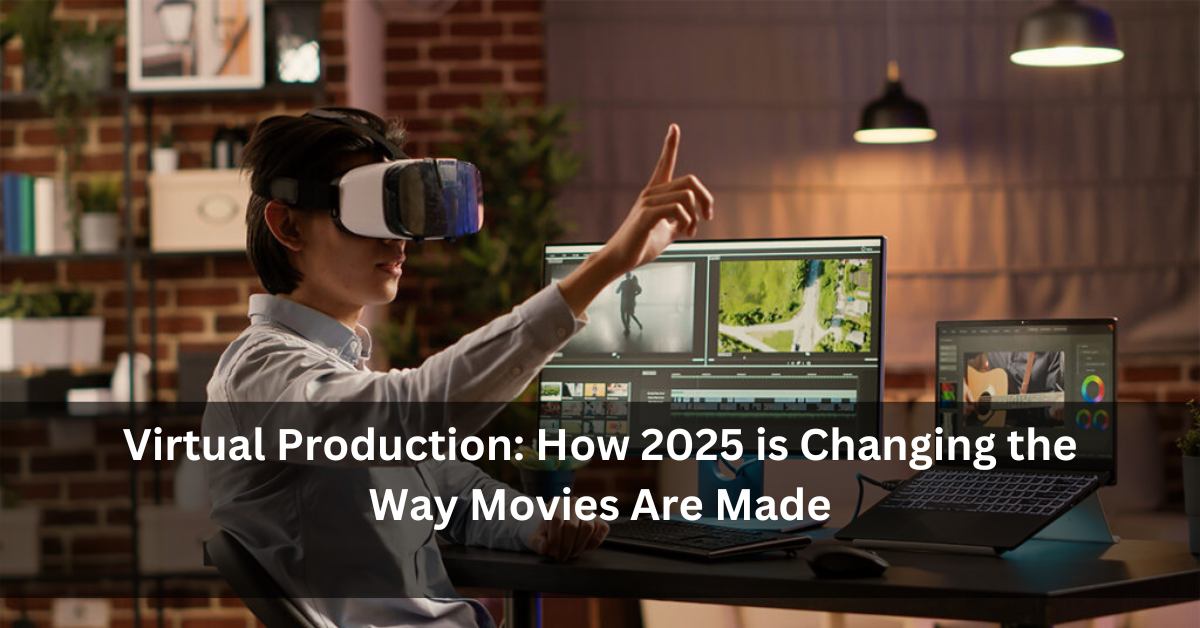Virtual Production: How 2025 is Changing the Way Movies Are Made
The movie world is going through a big shift in 2025. A new technique called virtual production is becoming a game-changer for how films are made. It’s not something far off in the future—directors and studios are already using it today to create movies faster, at lower costs, and with visuals that really stand out.
In simple terms, virtual production means mixing real-time computer graphics with live filming. Think of actors performing in front of massive LED screens that show moving, realistic backgrounds—like a desert, a jungle, or even a different planet. These digital backgrounds move with the camera just like in a real location. This is very different from the old green screen method, where actors had to imagine everything.
What Makes Virtual Production So Special?
Virtual production is changing how directors shoot scenes. Instead of waiting for post-production to add backgrounds and effects, everything can be done while filming. Directors, actors, and crew members can see the final look on set itself. This makes the whole process quicker and smoother.
Here’s why people in the film industry are loving it:
- Saves Money: No need to travel to different places. Filmmakers can create any scene in one studio.
- Saves Time: Since you can see how the final shot looks while filming, there’s less editing work later.
- More Control: Directors can change lighting, weather, or background in real-time.
- Better Acting: Actors can actually see what’s around them, instead of acting in front of a green wall.
All of this leads to better films that are ready faster—and that’s a win for both filmmakers and audiences.
Virtual Production in India
India is quickly catching up with this trend. A good example is the Malayalam film Kathanar – The Wild Sorcerer, which is using virtual production in a big way. The movie is being shot in a specially built studio with advanced LED screens and real-time software.
Studios across Mumbai, Hyderabad, and Chennai are also setting up virtual production spaces. As Indian filmmakers learn more about these tools, they’re finding new ways to tell stories without depending on big budgets or foreign locations.
In fact, reports suggest that India’s virtual production market could grow to over 290 million USD by 2033. That’s a huge opportunity for creators who want to do more with less.
To stay updated on how virtual production is growing in India, keep checking Film Daily.
How Does It Work?
Let’s break it down simply:
- LED Screens – These giant video walls show the background in real-time. Instead of green screens, you get actual moving visuals that feel more natural.
- Game Engines like Unreal Engine – These software tools create the 3D environment. They make the background move as the camera moves, keeping everything realistic.
- Motion Capture – This tech captures how actors move and applies those movements to animated characters.
- In-Camera Effects – Special effects are added live during filming. No need to wait for post-production.
So instead of adding effects later, filmmakers now build the entire scene while they shoot. That’s what makes it so fast and exciting.
Big Studios Are Already In
Globally, major studios like Disney and Warner Bros have been using virtual production for a while now. Shows like The Mandalorian made it popular, and now it’s spreading fast. Even tech companies are entering the game. At Google I/O 2025, a new tool called “Flow” was introduced. It uses AI to create video scenes that look like they were made by professionals. This means more options for smaller creators as well.
And Indian studios aren’t far behind. With rising interest in better quality and quicker releases, Bollywood and regional cinemas are adopting virtual production faster than expected.
More news on this is regularly covered on Film Daily, where you can track updates, new projects, and Indian studios joining the movement.
What This Means for Viewers?
For movie fans in India, this means films will start looking more polished and creative—even on smaller budgets. Directors can bring us to new worlds, and production houses can release more films without long delays.
Also, actors can give better performances since they can see and react to what’s around them. And since most of the film is shot in one studio, there’s more safety, better scheduling, and fewer delays due to weather or location issues.
If you love movies, this is a good time to follow what’s happening in the world of virtual production. Head over to Film Daily to stay in the loop.
Final Thoughts
Virtual production is not just a trend—it’s quickly becoming the normal way of making movies. It gives directors the freedom to create any scene they want, saves time and money, and helps actors do their best work.
In India, we’re seeing the start of something big. As more filmmakers take interest in this style, we can expect even better films in the years to come.
Want more stories like this? Visit Film Daily for updates, interviews, and behind-the-scenes news from the Indian film industry.







